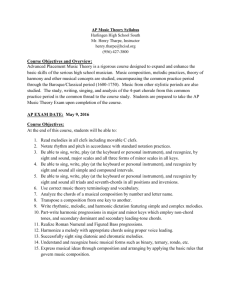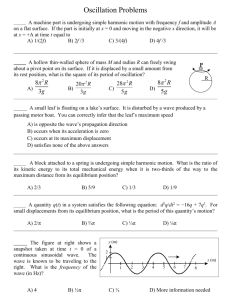harmonic variations
advertisement
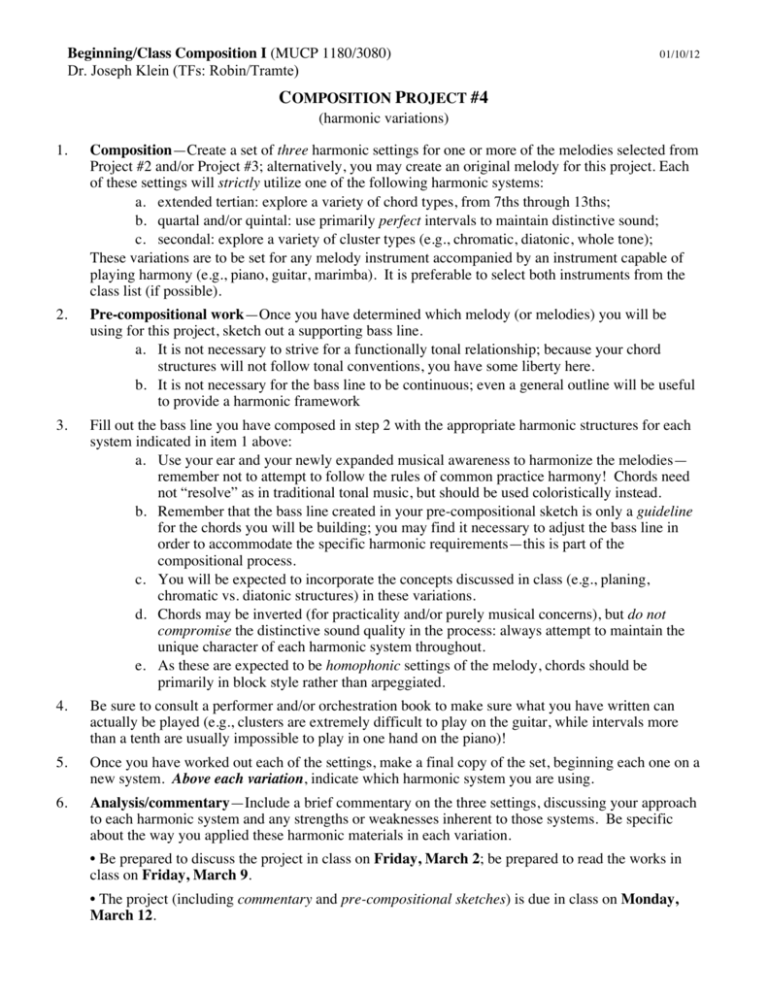
Beginning/Class Composition I (MUCP 1180/3080) Dr. Joseph Klein (TFs: Robin/Tramte) 01/10/12 COMPOSITION PROJECT #4 (harmonic variations) 1. Composition—Create a set of three harmonic settings for one or more of the melodies selected from Project #2 and/or Project #3; alternatively, you may create an original melody for this project. Each of these settings will strictly utilize one of the following harmonic systems: a. extended tertian: explore a variety of chord types, from 7ths through 13ths; b. quartal and/or quintal: use primarily perfect intervals to maintain distinctive sound; c. secondal: explore a variety of cluster types (e.g., chromatic, diatonic, whole tone); These variations are to be set for any melody instrument accompanied by an instrument capable of playing harmony (e.g., piano, guitar, marimba). It is preferable to select both instruments from the class list (if possible). 2. Pre-compositional work—Once you have determined which melody (or melodies) you will be using for this project, sketch out a supporting bass line. a. It is not necessary to strive for a functionally tonal relationship; because your chord structures will not follow tonal conventions, you have some liberty here. b. It is not necessary for the bass line to be continuous; even a general outline will be useful to provide a harmonic framework 3. Fill out the bass line you have composed in step 2 with the appropriate harmonic structures for each system indicated in item 1 above: a. Use your ear and your newly expanded musical awareness to harmonize the melodies— remember not to attempt to follow the rules of common practice harmony! Chords need not “resolve” as in traditional tonal music, but should be used coloristically instead. b. Remember that the bass line created in your pre-compositional sketch is only a guideline for the chords you will be building; you may find it necessary to adjust the bass line in order to accommodate the specific harmonic requirements—this is part of the compositional process. c. You will be expected to incorporate the concepts discussed in class (e.g., planing, chromatic vs. diatonic structures) in these variations. d. Chords may be inverted (for practicality and/or purely musical concerns), but do not compromise the distinctive sound quality in the process: always attempt to maintain the unique character of each harmonic system throughout. e. As these are expected to be homophonic settings of the melody, chords should be primarily in block style rather than arpeggiated. 4. Be sure to consult a performer and/or orchestration book to make sure what you have written can actually be played (e.g., clusters are extremely difficult to play on the guitar, while intervals more than a tenth are usually impossible to play in one hand on the piano)! 5. Once you have worked out each of the settings, make a final copy of the set, beginning each one on a new system. Above each variation, indicate which harmonic system you are using. 6. Analysis/commentary—Include a brief commentary on the three settings, discussing your approach to each harmonic system and any strengths or weaknesses inherent to those systems. Be specific about the way you applied these harmonic materials in each variation. • Be prepared to discuss the project in class on Friday, March 2; be prepared to read the works in class on Friday, March 9. • The project (including commentary and pre-compositional sketches) is due in class on Monday, March 12.
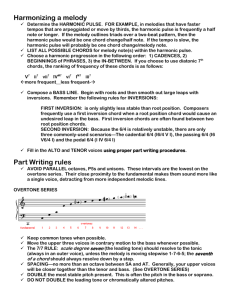
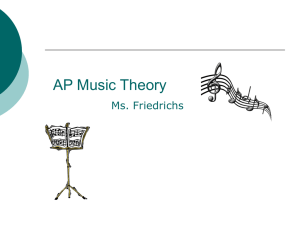



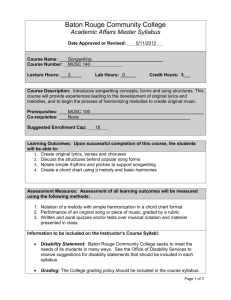

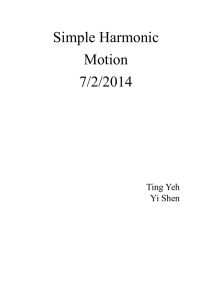
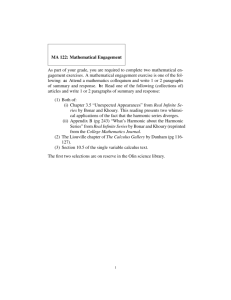
![Harmonising the Harmonic Minor Scale [Word doc]](http://s3.studylib.net/store/data/008947822_1-fe876fde6a621b1b60dc8bc81d92e0a7-300x300.png)
